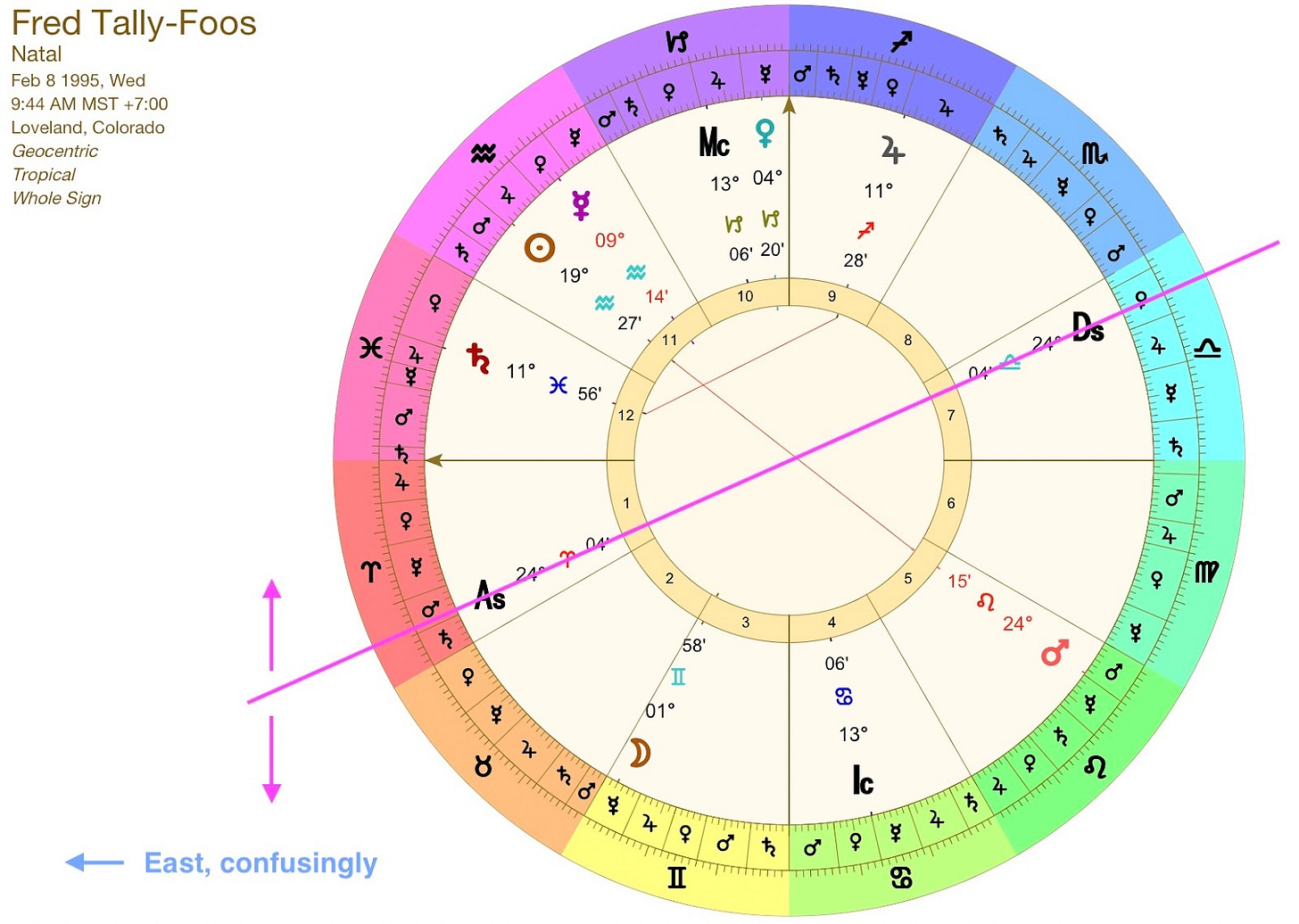#6: Where do you sit in your natal chart?
and the moon's question for you about co-dependence...
Upcoming Astrology:
There are plenty of week ahead resources out there (the CHANI podcast is a good one), so I thought it might be more fun to read a focused interpretation of one dynamic in the sky.
Full moon in Libra: Full moons are the peak of a cycle that starts with a new moon. A new moon represents the planting of a seed in some area of life and when the moon is next full in that sign, it’s the flowering plant, the fruit to be harvested. Over the course of the next several months before the next new moon in that sign, there is a phase of decomposition, retreat and rest in regard to the area of life represented by that sign and house in your chart.
The last new moon in Libra was September 25, 2022. The full moon in Libra is on April 5, 2023. With this cycle, you can consider what seeds you were planting in September with regard to Libran ideals: who were you supporting, how were you balancing your relationships, how did you account for your own worth in relation to others’?
With the full moon in Libra, we focus on the axis of the zodiac that holds Libra on one end and Aries on the other. This axis represents the tension between self and union. With this full moon, you might benefit with considering how your own light (the Sun in Aries) shining on the other people in your relationships (the Moon in Libra) benefits you both. The scales of Libra want real balance here, not a sublimation of yourself in order to prop up other people. Now would be a great time to give attention to your relationships that feel aligned in values and care.
Continuing to learn about astrology – time, space, etc.
Part II. Your chart is a physical space and you are in it.
Last week I talked about how to generate your chart using Astro.com. There are lots of other options out there, including this nicely designed one by CHANI. And, if you want to be a low key astrology hobbyist, the CHANI app itself is worth the ten dollars per month.
This week, I’m explaining a little bit about the natal chart. What does the circle mean, what are all those symbols, why does yours look different from your mine?
Your birth chart shows the relative position of each of the quickly moving bodies in the sky to you on Earth. It’s three dimensional space flattened into a two dimensional picture. The natal chart is a way of showing where the planets were in relation to you and to each other when you took your first breath.
The chart is split up into 12 areas of life (12 houses), sequentially, symbolically ordered. In reality, these can be seen in real space if you were to look at the sky and break the arc of the sun or the moon into 30 degree sections — luckily you really don’t need to break out any astronomical tools to get a grasp of the concept. Imagine that these twelve areas in the chart are twelve different structures, each the same size, empty and plain.
If you generated your chart using my instructions, you’ll see that each house aligns with a sign. The arrangement of the signs to the houses is based on your rising sign, the sign that was poking above the Eastern horizon (on the left of side of your chart) when you took your first breath. Symbolically, you were born under this sign, which, unless you were born at sunrise, is probably different from the sign the Sun was in when you were born. This is the sign most ancient Greeks would have assumed you meant if you asked their sign, rather than the sign the Sun was in.
Below, I included a screenshot of my chart with the horizon line drawn in pink. Everything above the line was above the horizon where I was born, when I was born and everything below the line was out of sight, symbolically underground. Whichever sign the horizon fell into when you were born determines the first house, and, in Zodiacal order, the rest of the houses following. For me, this first house is Aries.
Now that you see which signs are aligned with each house, imagine that those twelve, empty houses mentioned earlier are painted, given window treatments, landscaped, and filled with furniture (or not) and books (or not) and technology (or not) and readied for specific types of people. The signs provide and describe that environmental factor of the spaces in your chart.
Small detour: Some astrologers allow those signs to be different sizes, to overlap with different amounts of each house. The Co-star app defaults to one of those other systems. Those systems are valid and fit into a part of the history of astrology, but they’re not what I’ve worked with. It could be it’s own long digression, but, the teachers I resonate with the most use the Whole Sign system, I like the history and tradition of it, and it’s been usable for me. You can read about this from one astrologer I like here.
Hopefully tying the metaphor up neatly: we all have all twelve structures (twelve houses), each aligned with a different sign. This means we all manifest each sign in our chart. There’s no person born without Gemini or Scorpio or Aries or Pisces represented in their chart and in their life. You, as a complex human being, born at a time in a place, contain multitudes.
There will be empty houses in your chart. It’s not a question of “maybe having empty houses” because there are twelve houses and only ten planetary bodies to place in them. Seven if you only count the traditional bodies, ignoring Neptune, Uranus, and Pluto. To understand the houses, empty or not, you have to bring in the planets and consider how they’re interacting with each other. This is where the chart becomes a representation of a story.
If the twelve houses are structures (houses in neighborhood?), then the planets are the property owners, tenants, landlords, and visitors who play out stories, hold grudges, take care of each other, and enact rent strikes. To save your inbox, I’ll dig deeper into this next week.
I like the technicality of astrology. I don’t think of myself as a mathematical person or even an especially detail oriented person. There are many, many settings in which I don’t have the attention for process. But I do like patterns and I do like associative thinking. I was a kid who liked writing “compare and contrast” essays in school because that was a puzzle with potentially endless solutions. Any two or more stories, characters, or images provided interesting insight with the simple question of “How are these the same or different?”
It might be a small stretch, but my interest in astrology, with art, with poetry, with spirituality, comes from the gap inherent in comparison. Something similar is described by Robert Bly as the leaping of dragons between ideas. “That leap can be described as the leap from the conscious to the unconscious and back again, a leap from the known part of the mind to the unknown part and back to the known.” The trailing smoke of the dragons is the insight left behind by these two unrelated, related ideas.
The value of astrology’s technicality and depth of content and frustratingly dense source texts, I think, is the way it connects us with other people across time who have watched lights in the sky and made comparisons. Other people who asked questions about the repetition of events and the natural world, who applied scientific process to inherently murky topics that challenge the imagination. It doesn’t have to always be so grand (I don’t intend to stop using an astrological lens for the Real Housewives), but it also doesn’t have to be small. You are a wildly unlikely person among persons on a wildly unlikely planet among planets. It’s exciting to consider what all that might mean.
Always a lot of credit goes to the people who have been my teachers, both directly and through their freely shared knowledge, and so many books.
P.S. Send me your Enneagram and astrology and random questions why not?



